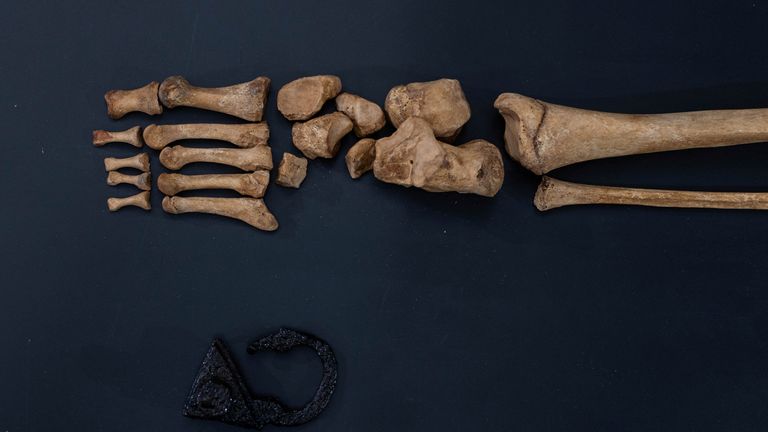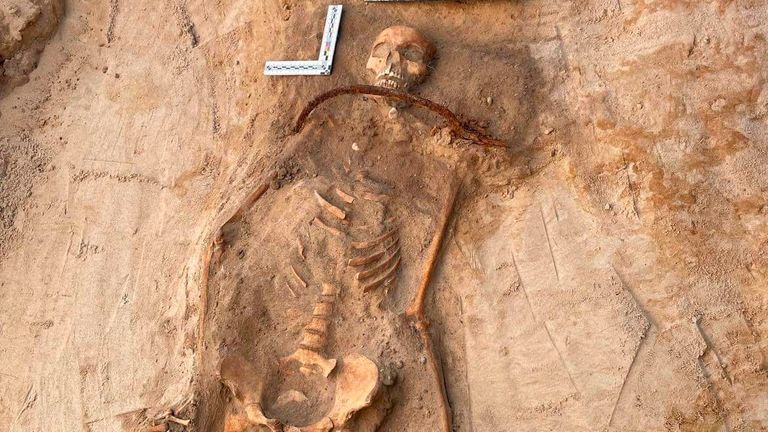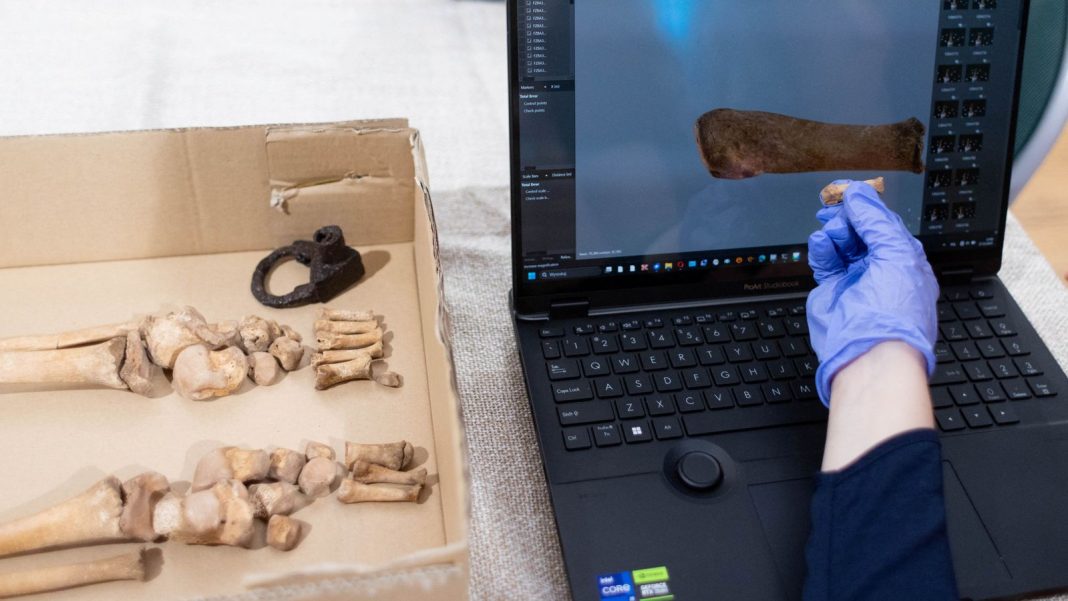A 17th-century child’s remains were found padlocked to a grave in Poland – an act that is thought to be been to stop him rising from the dead.
Archaeologists uncovered the body of a six- to seven-year-old buried facedown with a triangular iron padlock under its foot.
It is believed the body, found in the northern village of Pien, was buried facedown and padlocked to the grave because of ancient supernatural beliefs in vampires.
The find was reported to have come from the same site as a year ago it was announced the remains of a woman had been discovered with a sickle around her neck and a triangular padlock on her foot.
The placement of the sharp metal blade was also thought to be a move to prevent her rising from the dead.
Professor Dariusz Polinski pictured with the remains of another body found at the 17th century cemetery
Professor Dariusz Polinski, a researcher on medieval burials at Nicolas Copernicus University in Torun, said: “This is a cemetery for rejected people, who were certainly feared after death, and perhaps also during life… who were suspected of having contacts with unclean forces, people who also behaved differently in some way.”
The child was likely buried facedown to keep it from sitting up and exiting the grave to feed on living people, he added.

The skeleton of a woman was also found buried with a padlock on her leg
“These are people who, if it was done intentionally, were afraid of… contact with these people because they might bite, drink blood,” said Prof Polinski.
The child’s bones date from an era that viewed ghosts, zombies and other supernatural entities as being as real as humans.

A skeleton of a woman found in the cemetery located in northern village of Pien, Poland, with a sickle around her neck
Read more from Sky News:
The scary game that gave me a heart rate warning
5,000-year-old tomb and skeletons discovered in Orkney
Rare lead coffins discovered in Gaza Strip
At some point after the burial, the grave was desecrated and all the child’s bones were removed apart from the legs.
To stop the living dead from rising up after burials, Prof Polinski added: “There were also a large number of graves with stones… which were also supposed to protect against the deceased, placed in various places, for example on the elbow, on the larynx or on the neck.”







